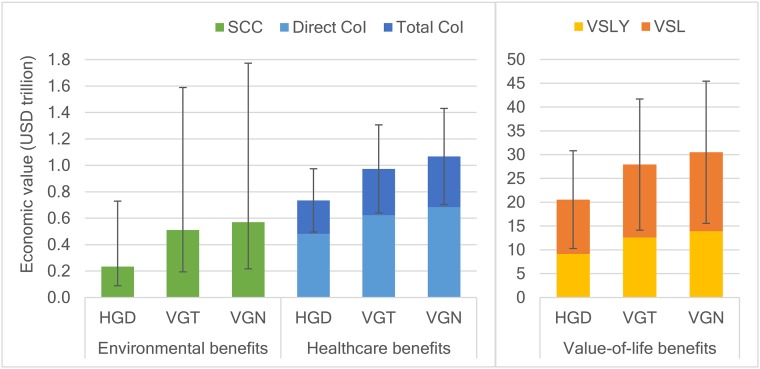Fig. 2.
Economic valuation of the health and environmental benefits of dietary change compared with a reference scenario for the year 2050. The three nonreference scenarios are as follows: one based on global guidelines on healthy eating and energy intake (HGD) and two based on vegetarian and vegan dietary patterns (VGT and VGN). (Left) The value of environmental benefits derived from estimates of the social cost of carbon (SCC) and the value of healthcare benefits based on estimates of the costs of illness (CoI), including direct healthcare costs and total costs, which also include indirect costs associated with unpaid informal care and productivity losses from lost labor time. (Right) The value of health benefits associated with the willingness to pay for mortality reductions based on the value of statistical life and life-year (VSL and VSLY). The uncertainty intervals for the environmental valuation stem from different SCC values in 2050 [71 US dollars per ton of CO2 (71 USD/tCO2); 27–221 USD/tCO2], and the uncertainty intervals for the health valuation stem from high and low values of the costs of illness (±30%) and the VSL (±50%).

